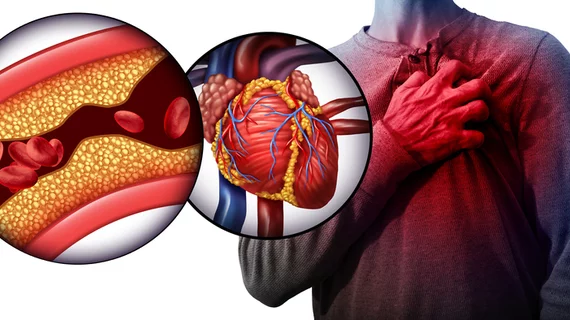Study the signs: The most common symptoms of 6 cardiovascular diseases
Monitoring patient symptoms is an essential part of diagnosing and treating cardiovascular disease (CVD). A new scientific statement from the American Heart Association (AHA), published in Circulation, was designed to give clinicians a helpful resource that details the most commonly reported symptoms of a variety of conditions, including heart attack, heart failure, vascular disease, electrical conduction heart rhythm issues and valve disease.
“Symptoms of these cardiovascular diseases can profoundly affect quality of life, and a clear understanding of them is critical for effective diagnosis and treatment decisions,” Corrine Y. Jurgens, PhD, RN, ANP, an associate professor at Boston College’s Connell School of Nursing and chair of the statement’s writing committee, said in a statement.
The report also highlights the importance of tracking all symptoms, even those that may not stand out at first as being especially relevant.
“Some people may not consider symptoms like fatigue, sleep disturbance, weight gain and depression as important or related to CVD,” Jurgens added. “However, research indicates that subtle symptoms such as these may predict acute events and the need for hospitalization. A broader definition of what constitutes an ‘important’ symptom is warranted.”
Heart attack symptoms
The most commonly reported symptoms of a myocardial infarction, and all acute coronary syndromes, is chest pain.
The report’s authors also noted that shortness of breath, considerable sweating, fatigue, nausea and lightheadedness may all signal that the patient faces a heightened heart attack risk.
Heart failure symptoms
Shortness of breath is perhaps the most common symptom associated with heart failure. However, gastrointestinal issues, fatigue, insomnia, pain—in the chest and elsewhere—and changes in mood are all also signs that a patient may need to be evaluated for heart failure as soon as possible.
Women, the authors noted, are more likely to experience depression or anxiety associated with heart failure. They are also more likely to notice and report changes in their symptoms over time.
Heart valve disease symptoms
Valve disease—severe aortic stenosis, for instance—is associated with many of the same symptoms as heart failure. Shortness of breath, frailty and exercise intolerance are more common symptoms among women than men, and chest pain is a more common symptom among men than women.
Stroke symptoms
Patients have been told for years to focus on the F.A.S.T. acronym—Face drooping, Arm weakness, Speech difficulty, Time to call 911—when it comes to monitoring for stroke symptoms. General confusion and the loss of coordination are two other signs that a person may be experiencing a stroke and require immediate medical attention.
Headaches and impaired thinking are two symptoms more commonly seen in women than men, the authors added.
Heart rhythm disorder symptoms
The most common symptom associated with heart rhythm issues is an abnormal heartbeat, but fatigue, shortness of breath and dizziness are all also signs the patient could be experiencing an arrhythmia such as atrial fibrillation.
Not all heart rhythm patients even notice symptoms until it is too late. Men are more likely than woman to experience no symptoms at all. Also, older patients are more likely than younger patients to experience no symptoms.
Vein and artery disease symptoms
Vascular conditions such as peripheral artery disease (PAD) are often associated with claudication, or pain in the calf muscles, but many patients experience no symptoms at all. Also, the most common symptom associated with these conditions is pain elsewhere in the legs—like the feet and toes, for example.
“Measuring vascular symptoms includes assessing quality of life and activity limitations, as well as the psychological impact of the disease,” Jurgens said in the same AHA statement. “However, existing measures are often based on the clinician’s appraisal rather than the individual’s self-reported symptoms and severity of symptoms.”
When it comes to PAD, depression is also a common symptom, especially among women and older patients.
Peripheral vein disease is linked to similar trends, with patients often feeling no symptoms at all. Leg pain is the most common symptom, showing up in the form of fatigue, cramping, restless legs syndrome or even skin irritation.

